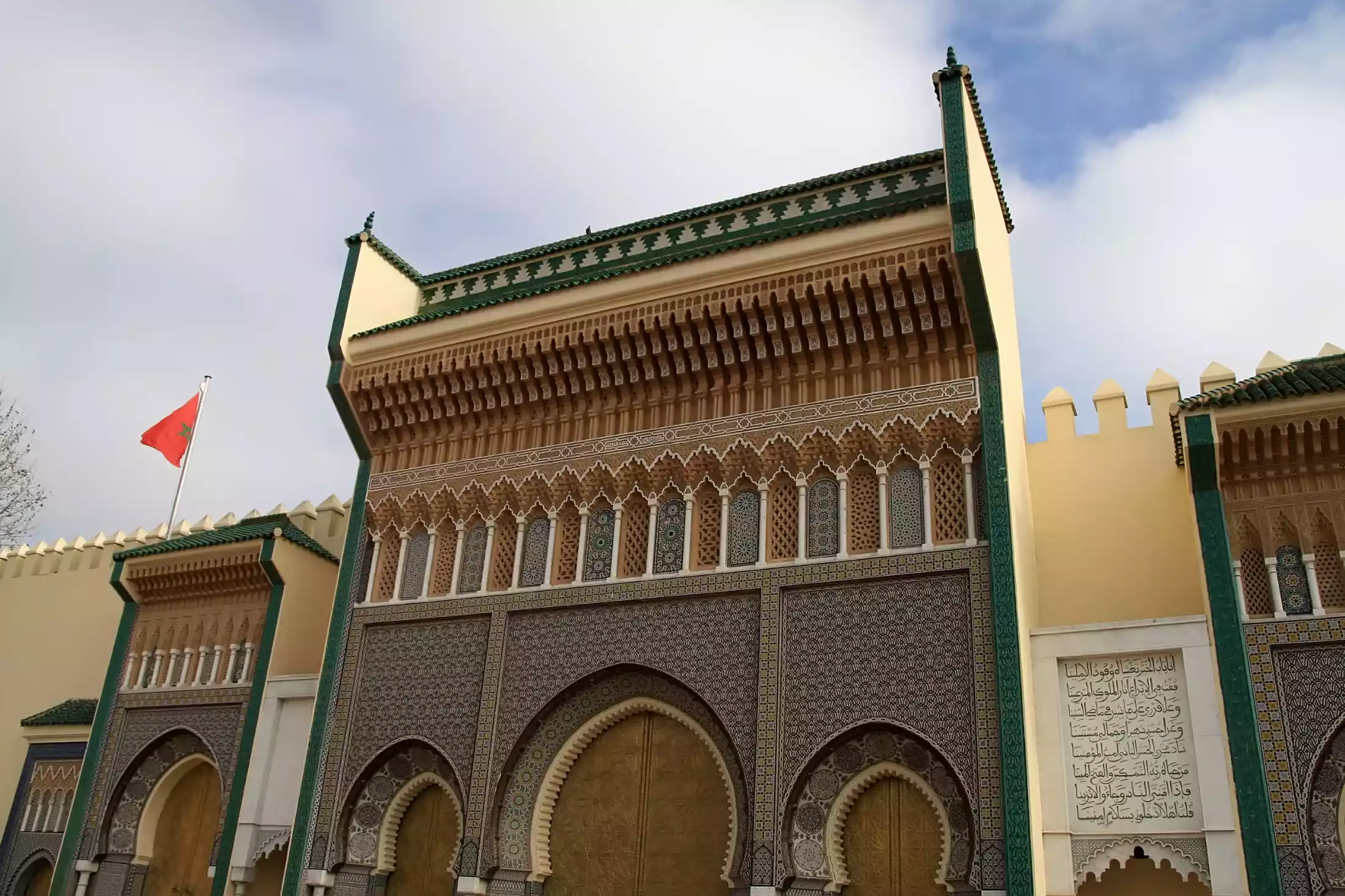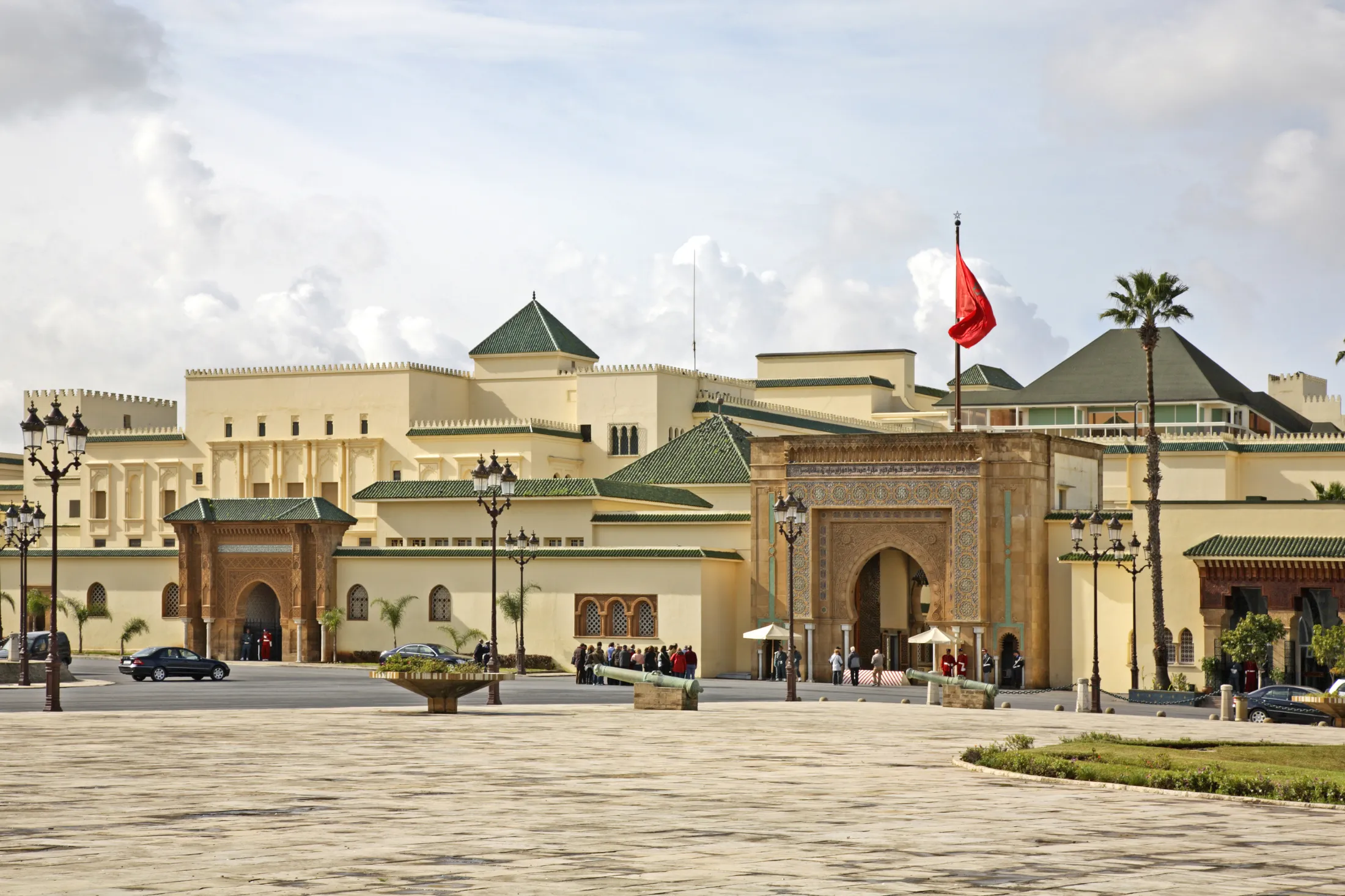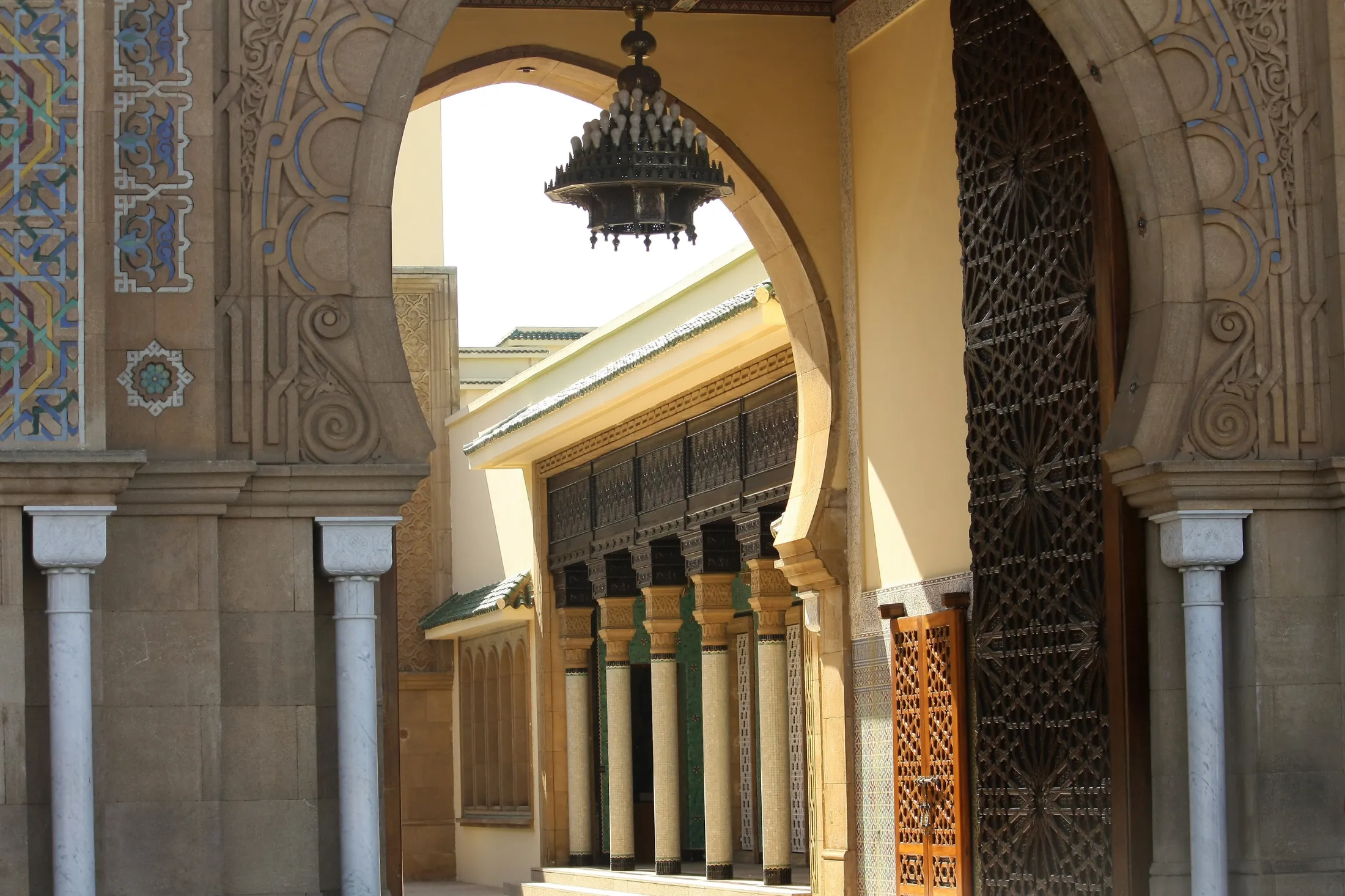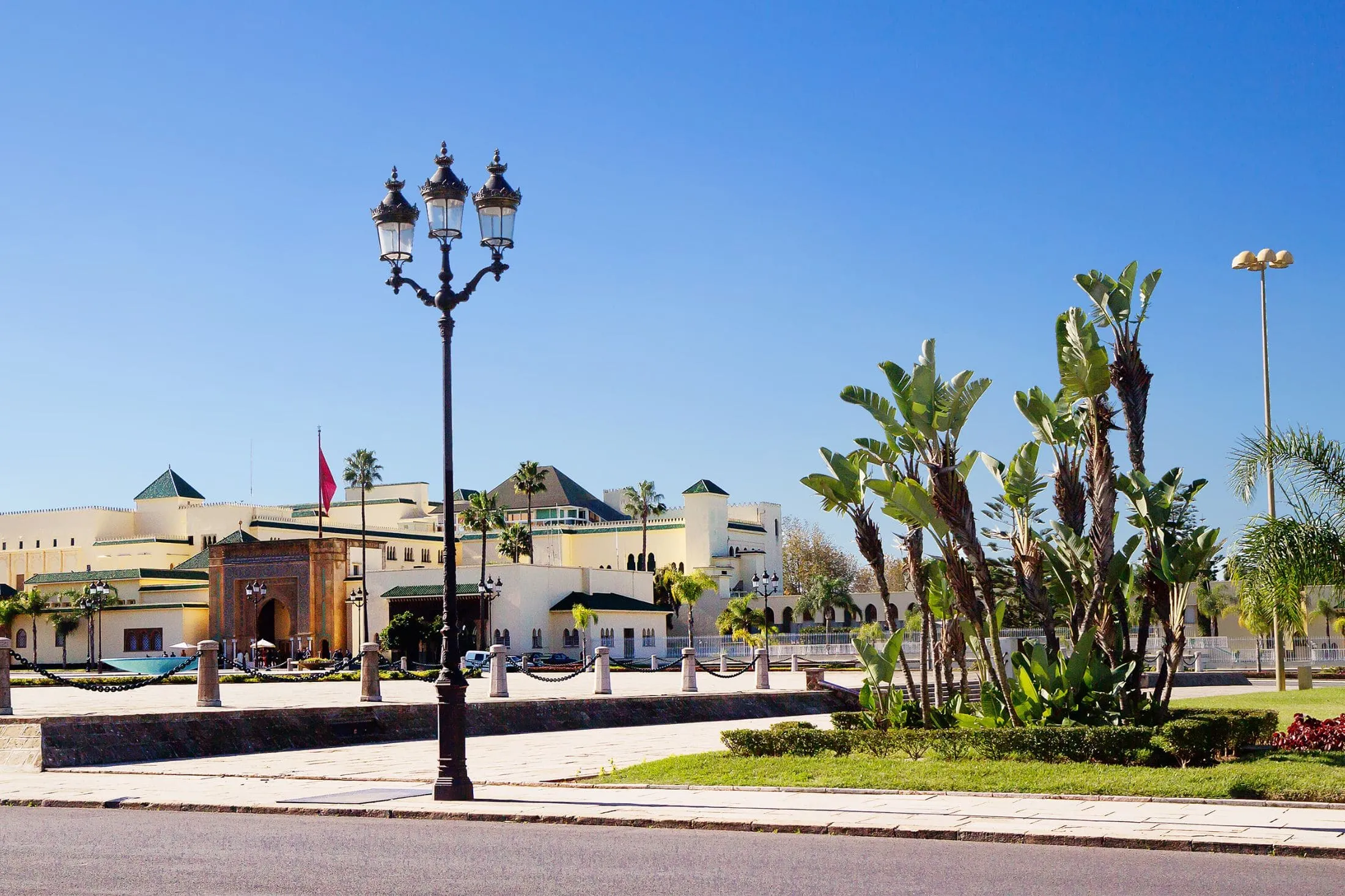The Royal Palace Rabat Morocco, known locally as Dar al-Makhzen, stands as a symbol of the enduring Moroccan monarchy. Situated in the commune of Touarga, its very name, El Mechouar Essaid, translates to ‘Venue of Happiness.
Stepping Back in Time at the Royal Palace Rabat Morocco
A Deep Dive into the Historical Significance of the Royal Palace Rabat Morocco

From the sandy dunes and bustling medinas of Morocco emerges a structure of unparalleled significance: the Royal Palace in Rabat. It is a chronicle of history, leadership, and the ever-evolving saga of a nation.
The Early Roots: An Imperial Vision
Tracing back to the 18th-century reign of Sultan Mohammed ben Abdallah, the city of Rabat was not merely a geographical location on the map of Morocco. It was an emblem of the royal grandeur of the Alaouite dynasty. The city stood out, not just as the capital but as a profound statement of authority, a testament to the power and vision of its rulers. It was during these times of change and consolidation that the foundations for the present-day palace were laid. In 1864, Mohammed IV ushered in a new era, commissioning the construction of the current palace, symbolizing a bridge between the majestic past and a promising future, replacing an older, timeworn palace.
Colonial Influences and Power Dynamics
The 20th century witnessed Morocco under the shadow of the French colonial regime. Starting in 1912, the political landscape of Morocco transformed. The French, in their strategic intent, desired the sultan to be in close proximity, marking his symbolic acceptance of the colonial regime. However, the spirit of Morocco remained undeterred. When the call of independence echoed in 1955, the Dar al-Makhzen palace, with its towering walls and ornate arches, continued to stand tall as the primary residence of the monarch.
The Personal Choices of Monarchs
The history of any nation is often peppered with the personal choices of its leaders. And Morocco is no exception. While the Royal Palace Rabat Morocco remained the official emblem of power, certain monarchs, notably Mohammed V, exhibited a preference for the quieter, more secluded halls of the Dar es-Salaam palace.
The Architectural Splendor of the Royal Palace Rabat Morocco

When one mentions the Royal Palace in Rabat, it conjures up visions of intricate design. A visit to this place is like a journey, a step back in time, and an exploration of the rich Moroccan royal history.
Entrance: The Grand Mechouar
As you approach the palace, the first sight that greets you is the magnificent mechouar, a parade ground. It houses a modest yet historically significant mosque, a beacon of spiritual guidance amidst the sprawling grounds. The mechouar embodies unity, power, and the indomitable spirit of Morocco. Its ground has felt the weight of history, especially during monumental occasions such as the return of Mohammed V from exile in 1955. It’s a space that resonates with tales of triumph and resilience.
Inside the Royal Enclave

Venturing further into the palace, the grandeur continues to unfold. While it’s the primary abode of the king and the royal family, its vast expanse accommodates more than the monarchial quarters. An integral part of the complex is the proud Moroccan Royal Guard, responsible for ensuring the safety of the palace and its royal inhabitants. Their presence adds to the palace a blend of tradition and duty.
One cannot discuss the palace without mentioning the Collège Royal. Nestled within its walls, this esteemed institution educates senior members of the royal family, ensuring that the future leaders of Morocco are well-versed in both global knowledge and local traditions.
For those with a culinary passion, the palace surprises with a dedicated cookery school. Here, age-old recipes meet modern techniques, ensuring that Moroccan cuisine’s legacy lives on. Meanwhile, the palace’s ground floor stands as a sanctuary for scholars and history buffs. The library, an architectural masterpiece in itself, has been meticulously curated to safeguard the precious manuscript collection of Hassan II. It’s a repository of books and a place full of knowledge and history.
The Lush Outdoors
Beyond the stone walls and majestic archways, the palace unveils another facet of its charm: its gardens. These are expansive canvases painted with a blend of French formal designs, traditional Arabic artistry, and the unparalleled beauty of local flora. Walking through these gardens is a delight, with fragrant blooms, the sound of rustling leaves, and the sight of artfully designed landscapes. Amidst the administrative and royal hustle and bustle, these gardens are a spot of tranquility, a place where one can reflect, rejuvenate, and revel in nature’s beauty.
As the sun sets, casting a golden hue over the walls of the Royal Palace Rabat Morocco, one is reminded of the timeless legacy that this architectural marvel embodies.

This palace, with its intricate designs and expansive courtyards, stands tall as a symbol of royal power, as well as a beacon of the nation’s enduring spirit. From the reigns of ancient sultans to the modern era of monarchs, Dar al-Makhzen has been a silent observer, recording the ebbs and flows of Morocco’s journey. If its walls could indeed speak, they would narrate tales of valor, of leaders who shaped the destiny of their people, of significant milestones that have marked the country’s timeline, and of everyday life that pulses within its grand corridors.
Moreover, beyond its regal facades and splendid interiors, the palace resonates with the dreams and hopes of a nation. It’s where past achievements blend seamlessly with future aspirations. It’s a place where the whispers of ancient traditions mingle with the voices advocating for progress and innovation.
Every brick, every arch, and every mosaic tile is infused with stories—stories that span centuries, stories that resonate with the pride of the Moroccan people. From the grand mechouar that has witnessed historical events to the lush gardens that offer respite and reflection, the palace is a microcosm of Morocco itself.
So, as we reflect on the Royal Palace Rabat Morocco, it is crucial to understand its profound significance. A visit to Rabat is a dance with the vast history, a chance to connect with Morocco’s essence, and an opportunity to envision its boundless future. Book a stay in Story Rabat and witness its marvels first-hand.
